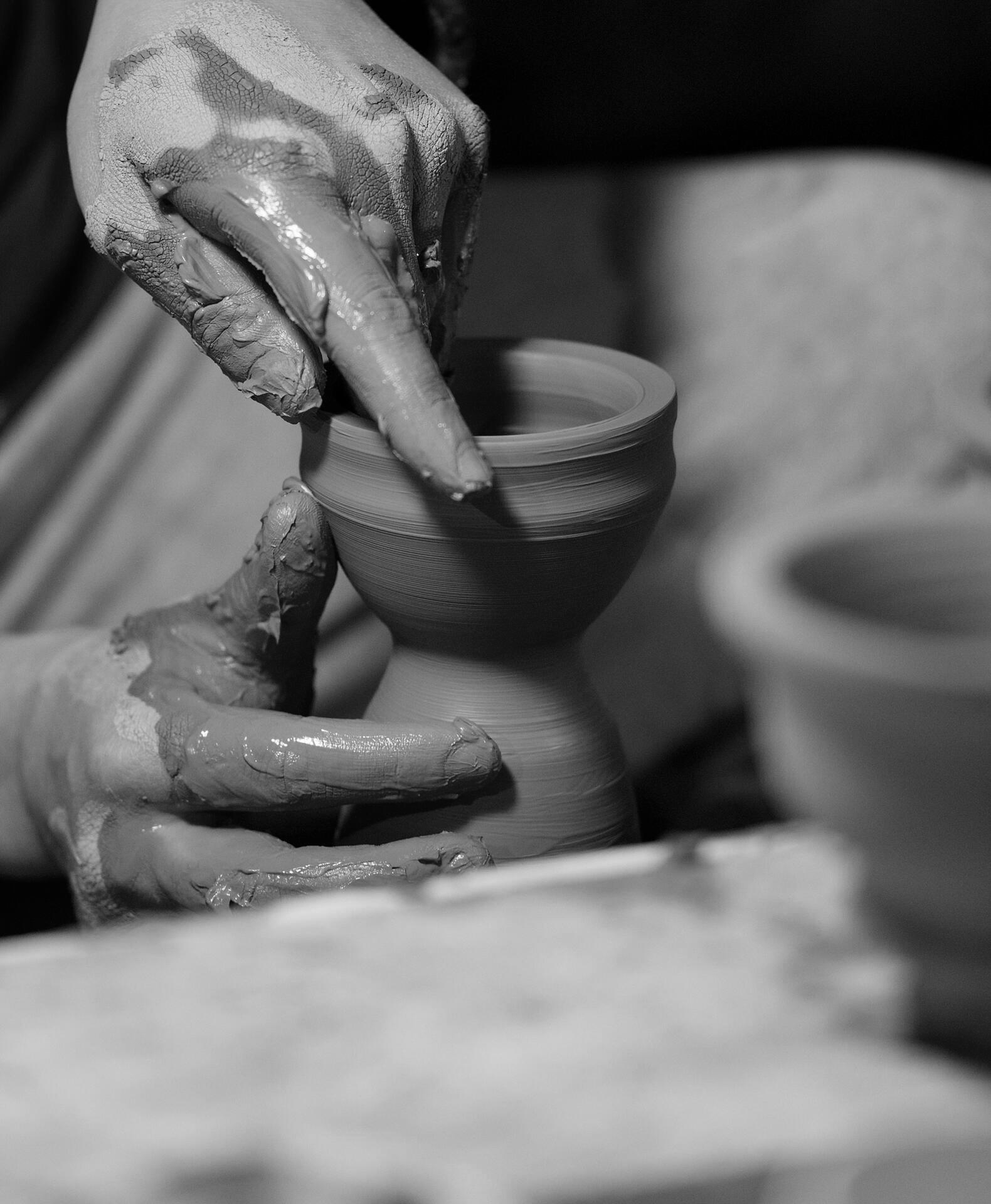I. Fusion of Tradition and Modernity
- Reimagined Visual Language
- Preserves classical decorative techniques like blue-and-white (青花) and famille rose (粉彩) but simplifies ornate patterns using modern design elements such as negative space and geometric divisions, achieving a “symbiosis of simplicity and complexity.”
- Example: The Yunshi Mugugu “Ruyi” Pattern Bowl combines Ming-style blue-and-white motifs with panoramic “open-light” designs, merging classical wave and ruyi (auspicious cloud) patterns into a minimalist aesthetic.
- Innovative Silhouettes
- Breaks traditional symmetry by introducing asymmetrical forms or ergonomic adaptations (e.g., grip-friendly curves) for enhanced functionality.
II. Naturalist Aesthetic Expression
- Material Inspiration
- Emphasizes “rustic simplicity,” retaining raw clay textures and kiln-transformed glazes to mimic natural elements like bamboo weaving or weathered stone.
- Example: Yanmo Shanfang tea sets feature hand-painted blue-and-white designs on coarse clay bodies, with glazes evoking aged patinas to convey wabi-sabi aesthetics.
- Symbolic Motifs
- Reinterprets traditional auspicious symbols (e.g., lotus flowers, egrets) through flattened or abstract styles, prioritizing symbolic resonance over literal narratives.
III. Cross-Disciplinary Experimentation
- Technological Evolution
- Adopts safer, durable underglaze decoration (釉中彩) techniques, eliminating lead-cadmium risks associated with older overglaze methods.
- Material Hybridization
- Merges ceramics with metal, glass, or 3D-printed materials to achieve intricate structures beyond traditional craftsmanship.
IV. Functionality and Contextual Adaptability
- Home Integration
- Designs prioritize compatibility with modern minimalist interiors, such as rectangular stone-patterned tiles for New Chinese-style spaces.
- Lifestyle Alignment
- Develops tableware tailored to contemporary habits, including thickened bowls for heat retention and chip resistance, combining aesthetics with food safety.
V. Globalization of Cultural Symbols
- Cross-Cultural Narratives
- Blends blue-and-white motifs with Western styles (e.g., Rococo, minimalism), as seen in Guangcai export ware featuring European custom patterns.
- Brand Storytelling
- Builds cultural IP through cohesive visual identities (VI) and packaging, such as Yuntang brand’s illustrated reinterpretations of Eastern motifs to resonate with younger audiences.
Core Philosophy: New Chinese-style porcelain deconstructs, recombines, and reinterprets traditional craftsmanship into culturally resonant objects that align with modern aesthetics, functionality, and values—a contemporary decoding of Eastern aesthetics.
